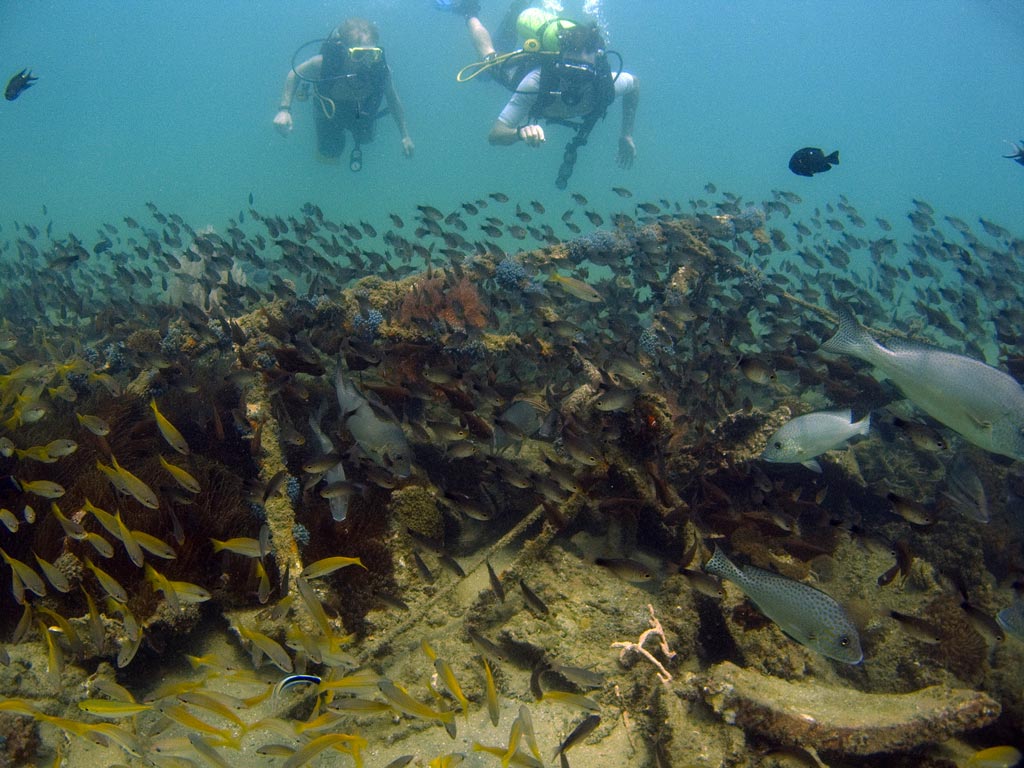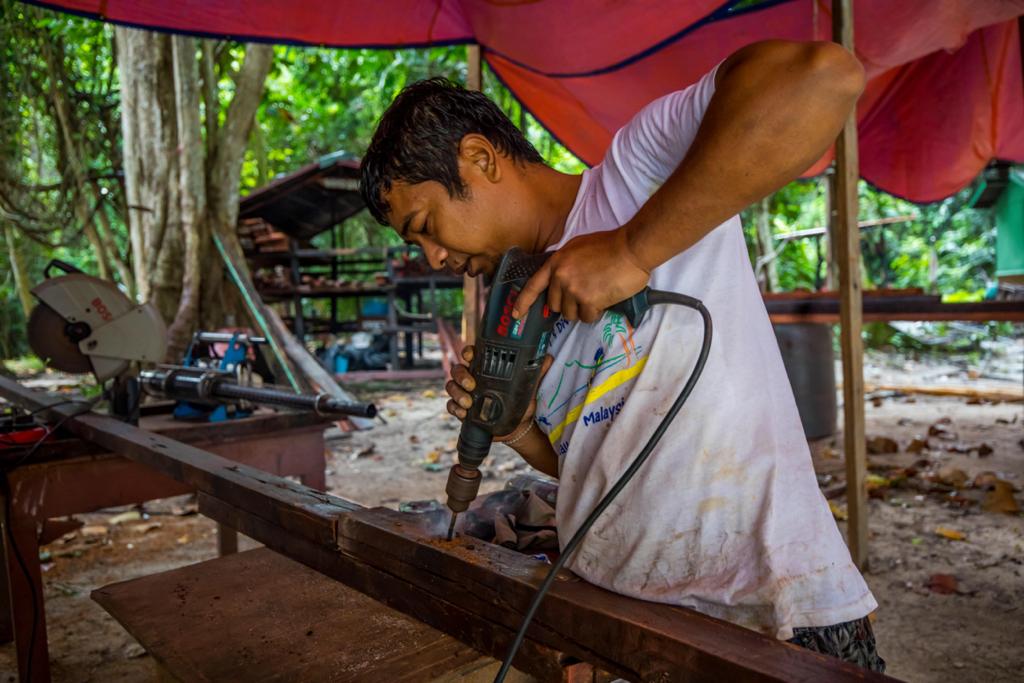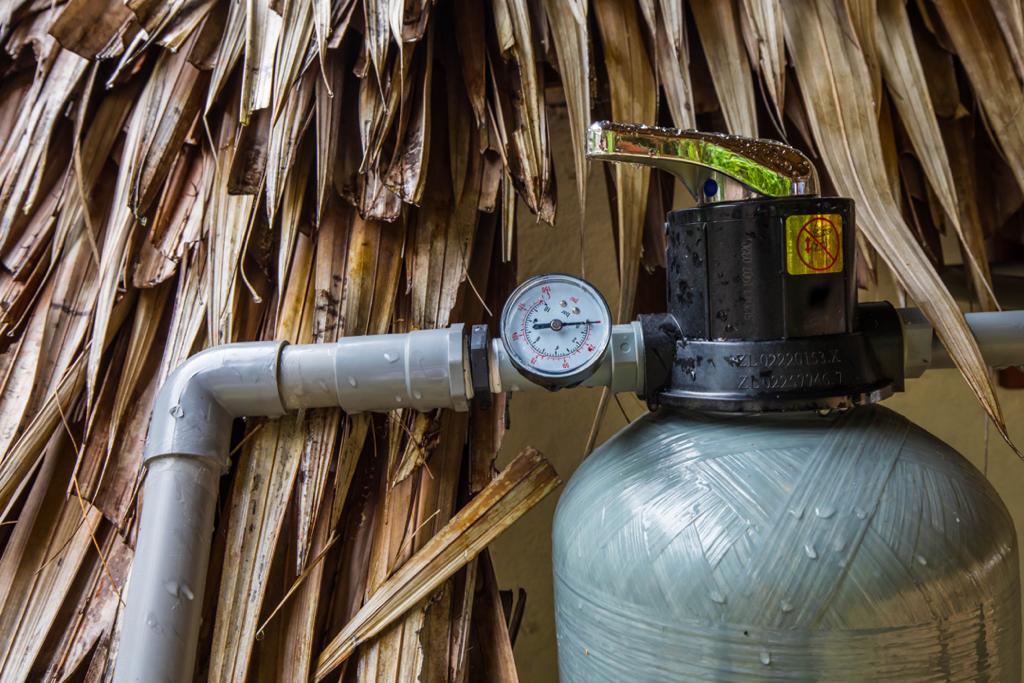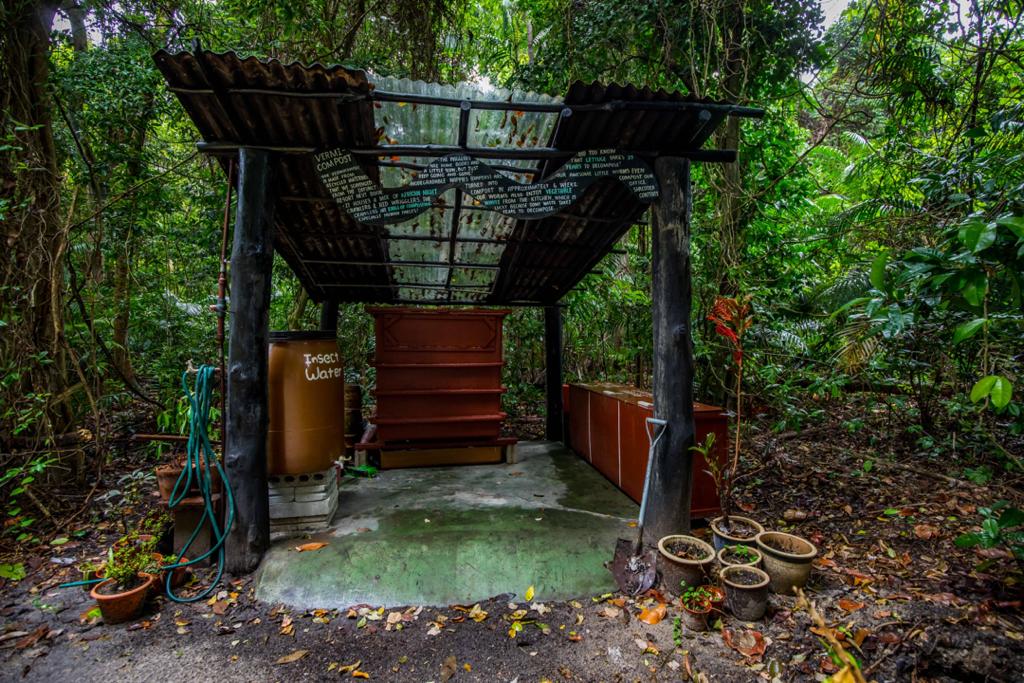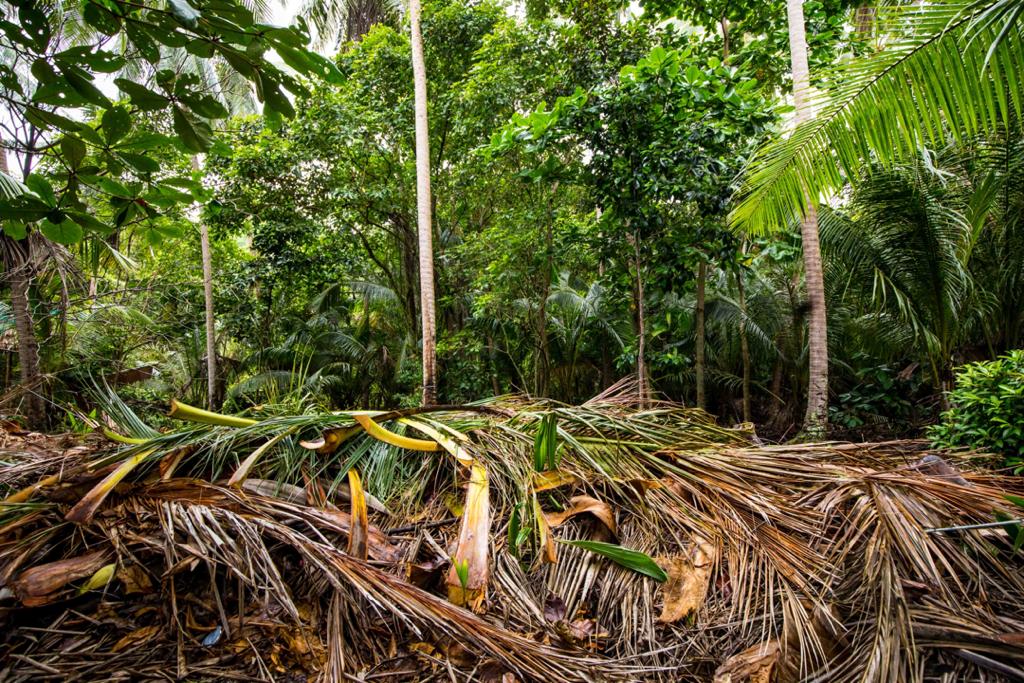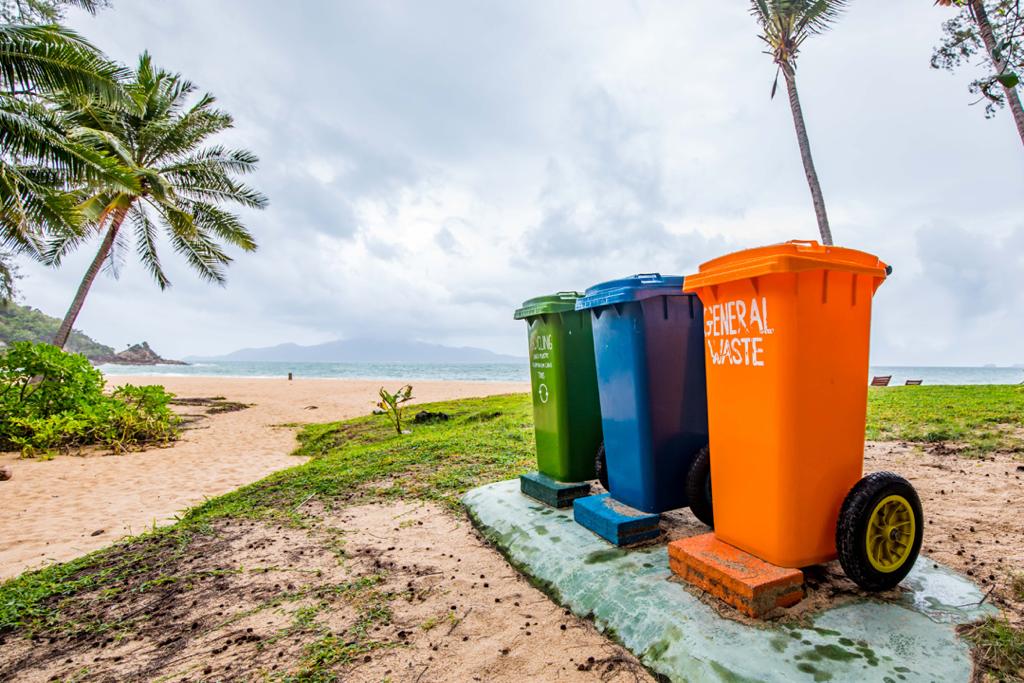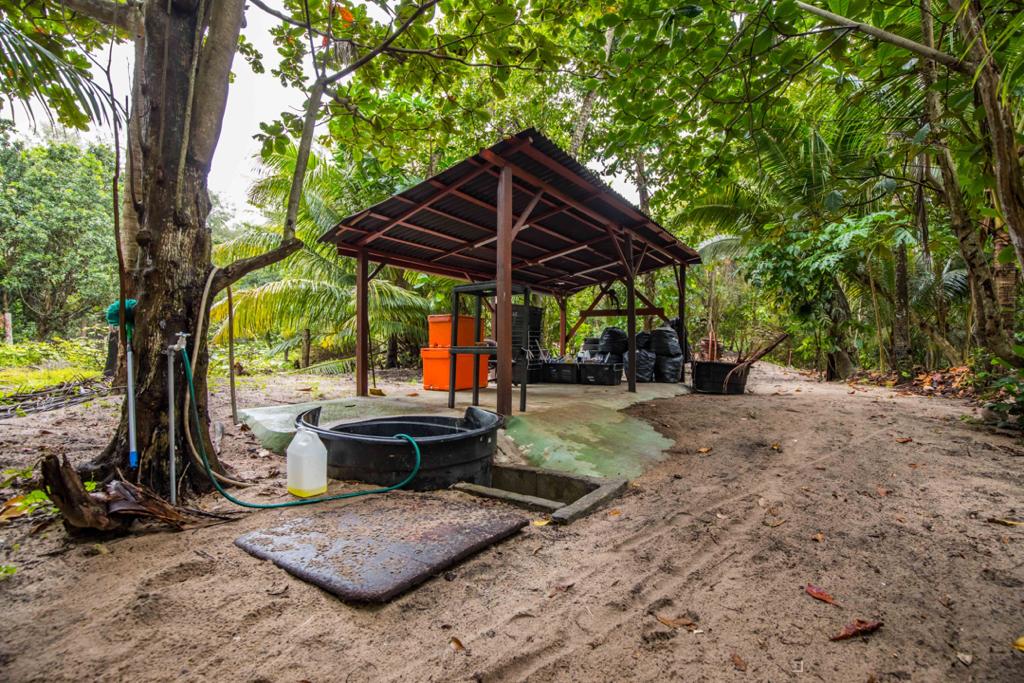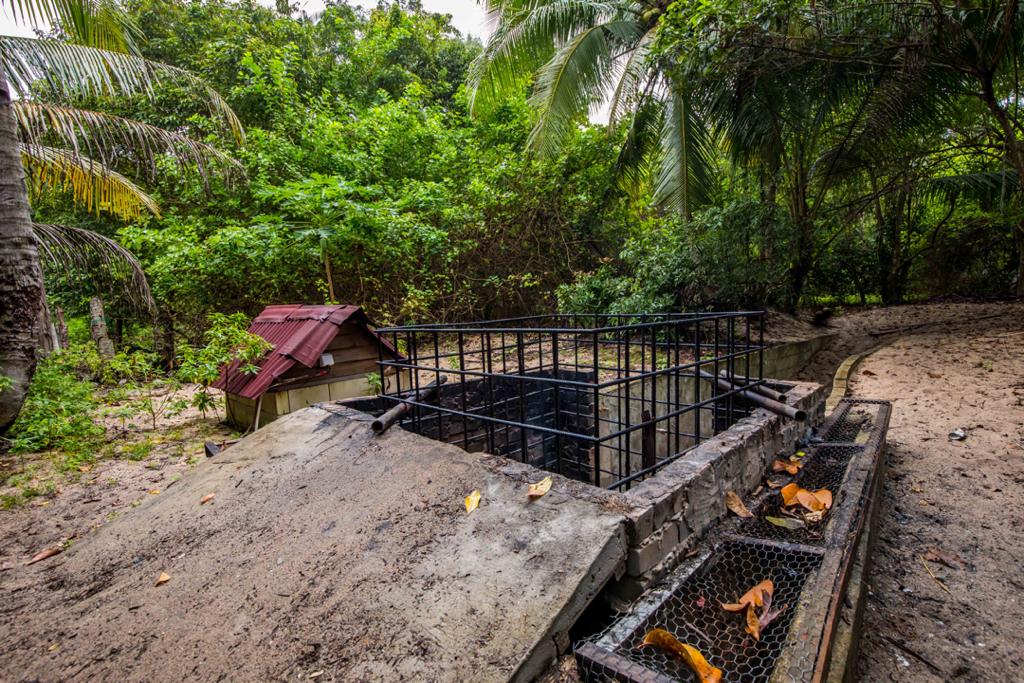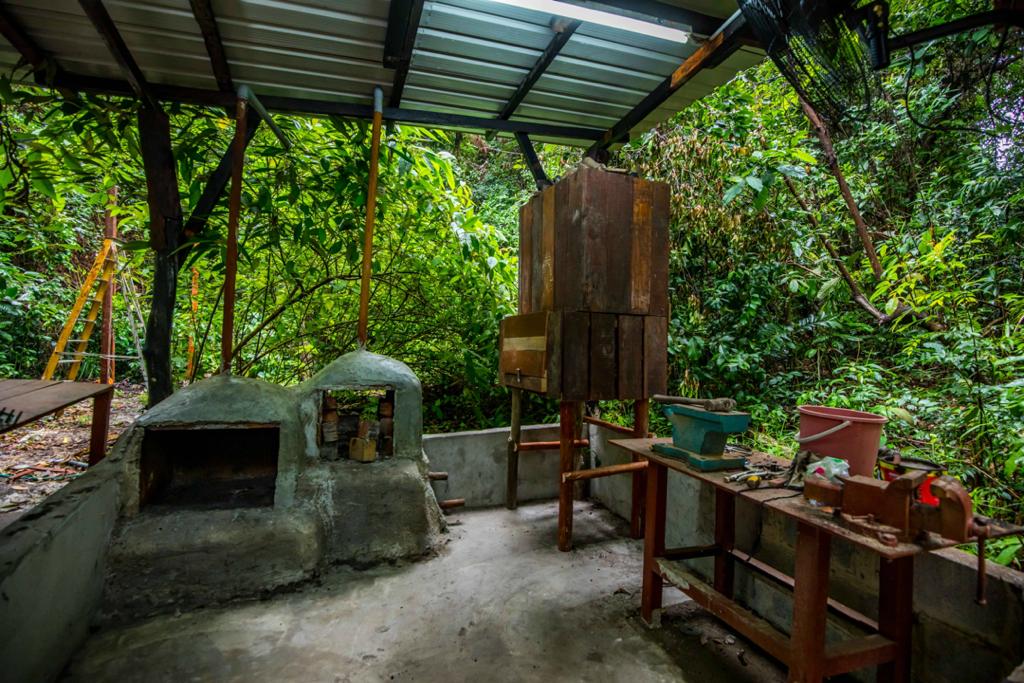
Forge Area
We built a simple forge by cutting two old metal bins to the correct size and then cutting holes in the top. These were filled with clay cement in order to create a cavity, into which we fed a metal pipe. Iron founders in Malaysia generally use coal in order to fire their furnaces, thus having a negative environmental impact. Happily, small off cuts of wood from our work shop are perfect for feeding into our forge, meaning not one tiny piece of the wood is ever wasted. Using a small fan, air is pumped directly into the flames through the pipe so that the fire gets hot enough to melt or soften iron, brass, steel, etc.
In 2021, we upscaled the forge by increasing the amount of oxygen and decreasing the amount of heat that escaped. By welding together an old fence and adding clay cement, we made a lid, with a tiny hole in the top into which a crucible could be placed. The forge was modified to accomodate the new features, and this allowed us to get the forge temperatures up to 1’400 degrees celsius, enough to actually melt brass, zinc and aluminium.
We can now make anything from hammers, knives & spades to bench press bars, hinges and handles! The forge also allows us to recycle scrap metal found on the beach such as old oil drums and metal buoys, which is used to mend various metal tools such as wheelbarrows. It has been an immense success and has allowed the resort to become more self-sufficient than ever before.

